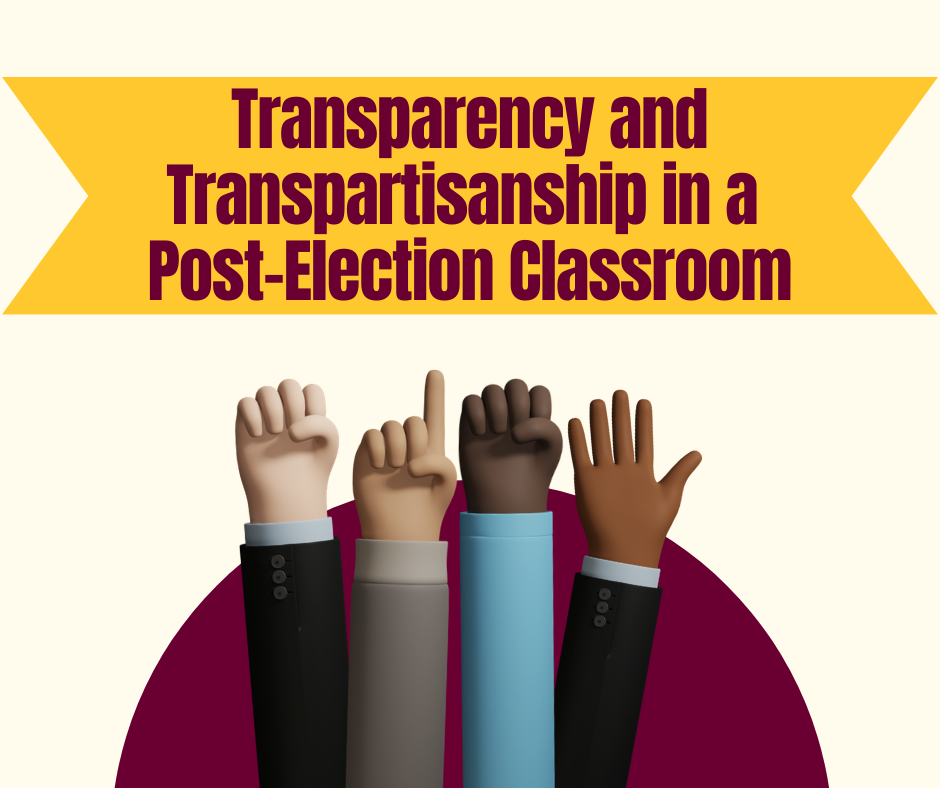As the 2020 elections conclude, emotions may be running high for many. This year has presented many challenges and introduced new stressors impacting faculty and students alike. As is often the case, higher learning institutions, like ours, have been active in the discussion of and adaptation to unpredictable circumstances; our role in student support continues to be important, now more than ever.
As the classroom climate may feel uncomfortable, we have a responsibility to ensure that our classes progress productively and that we continue to support and serve our students well. As leaders in our classrooms, this is an opportunity to model transpartisanship, focusing less on issues and outcomes of the election and more on problem-solving:
“There is a process or relationship aspect to transpartisanship, which focuses on the relationship between political adversaries and enhances their capacity for collaborative problem-solving. This involves providing a safe place for competing voices in our civic and political culture to engage with each other, challenge each other, and inspire each other to form a chorus that can break through the ideological static and bring a new melody into the public square” (Gerzon, n.d.).
Here are a few ideas that may support balanced, transparent dialogue:
- Listen
- Be mindful of body language, eye contact
- Affirm
- Be respectful when they’ve lost the plot
- Raise controversial issues when relevant
- Decide: Should you stake a position?
- Synthesize and reflect (to wrap up class discussion)
- Move the discussion to Bb shell, if needed. (Howard, 2019)
With an emphasis on collaborative problem-solving, regardless of the election’s outcome, we can encourage “…a safe place for competing voices in our civic and political culture to engage with each other, challenge each other, and inspire each other…” (Gerzon, n.d.). Helping students become thoughtful, contributing members of society is an essential and sometimes difficult task. If you would like to discuss strategies for navigating these conversations with your students, please contact us. We are here to help.
Here are some additional resources to support productive, focused, transparent, inclusive dialogue in your classrooms:
- Teaching: Can Colleges Prepare Students for the Election and Its Aftermath?
- How to Support Hurting Students Amid Ongoing Crisis
- Suggestions for Managing Uncomfortable Conversations in Class
- Building Inclusive Virtual Classrooms: Use the Four Cs Model to Encourage Tough Yet Necessary Discussions Among Students
- Class Management, from CMU’s Office of Curriculum & Instructional Support
- Structuring Community and Sustaining Expectations
- Inclusive Moves: Navigating Difficulty Moments (from the Derek Bok Center for Teaching and Learning at Harvard University)
- Making the most of “Hot Moments” in the Classroom and Facilitating Discussion (from the Center for Research on Learning and Teaching at the University of Michigan)
References
Gerzon, M. (n.d.). Transpartisan: A working definition. Mediators Foundation. Retrieved from http://mediatorsfoundation.org/resources-2/transpartisan-definition/
Howard, J. (2019). How to hold a better class discussion. The Chronicle of Higher Education. Retrieved from https://www.chronicle.com/interactives/20190523-ClassDiscussion

